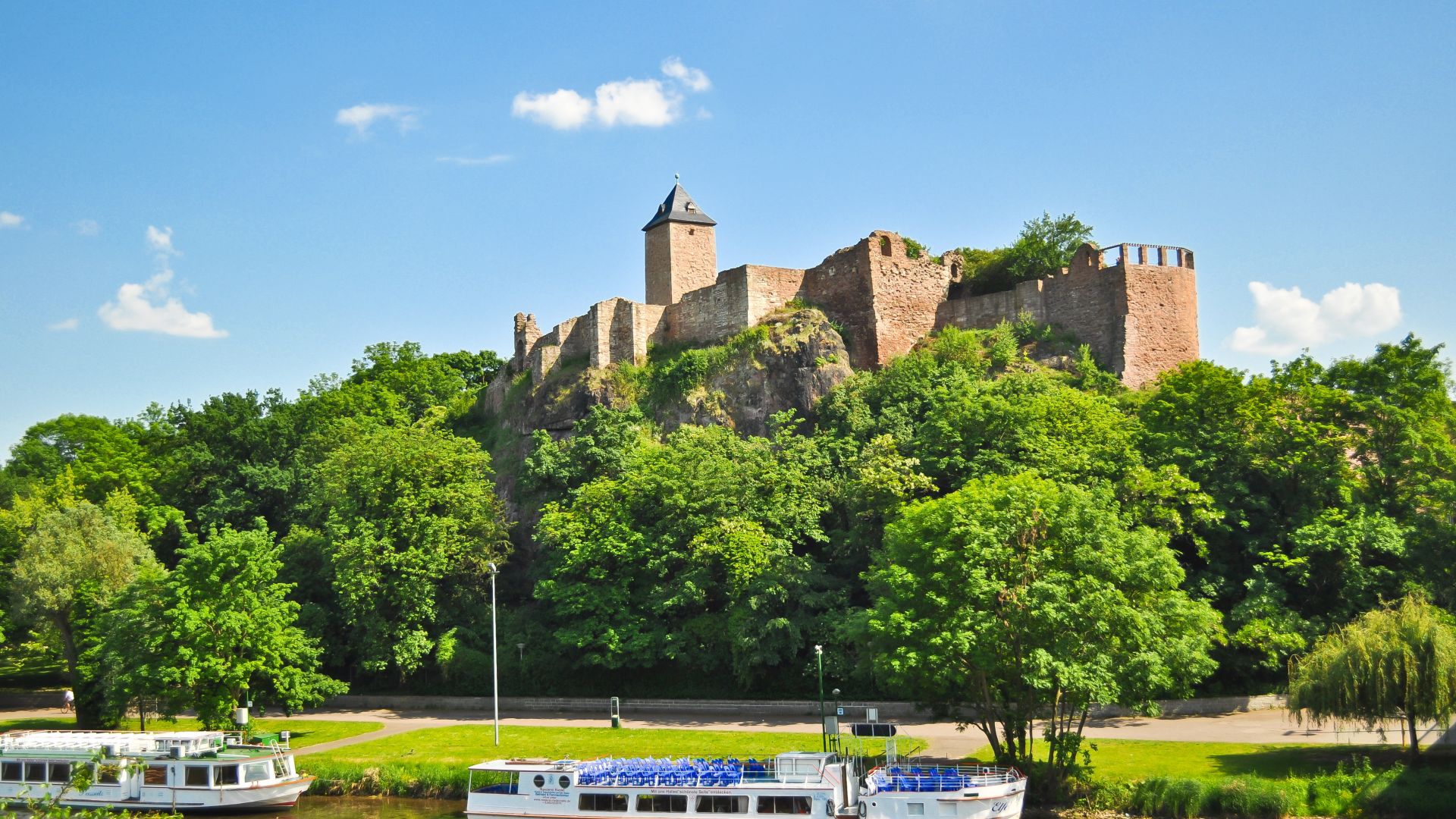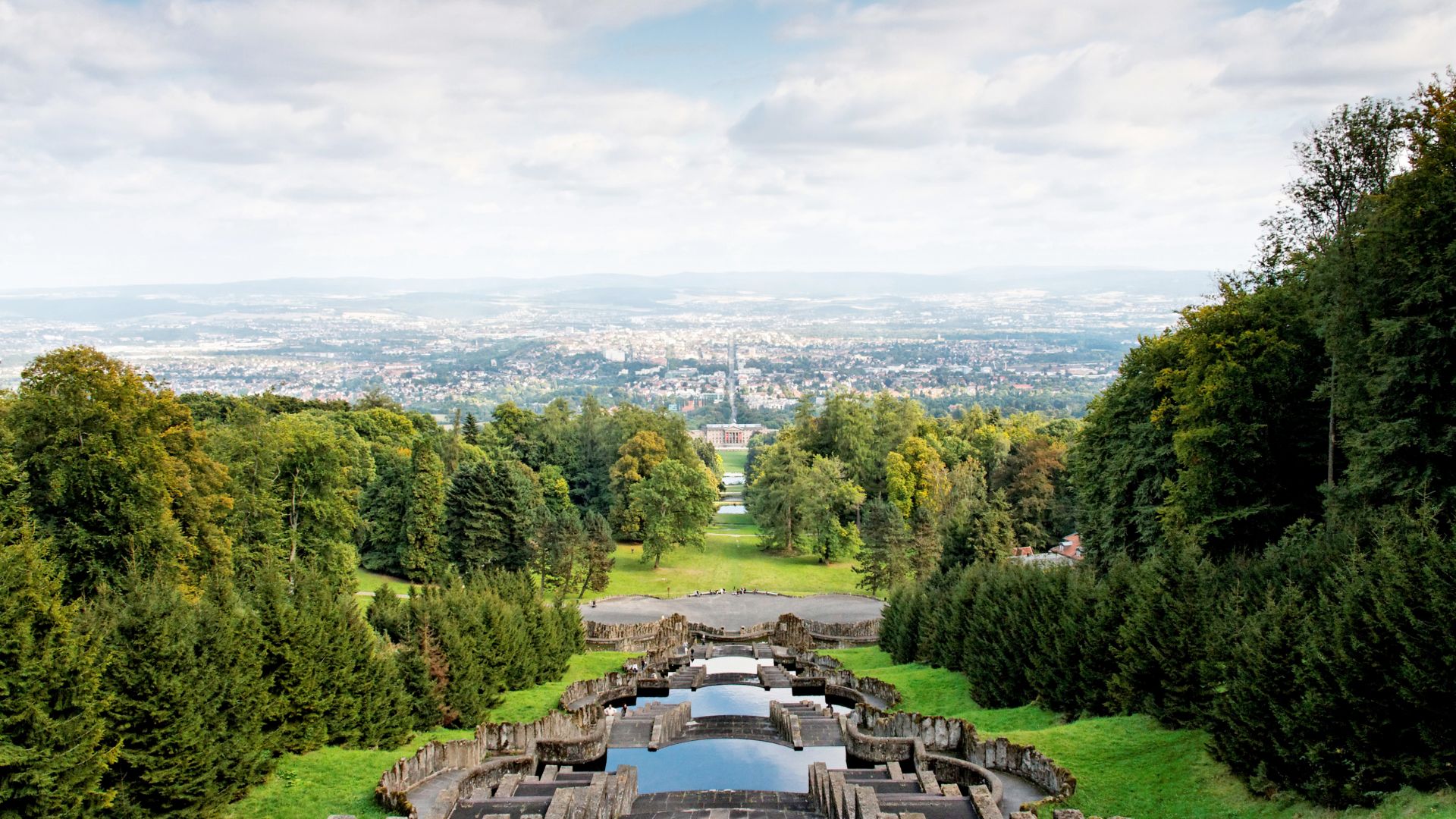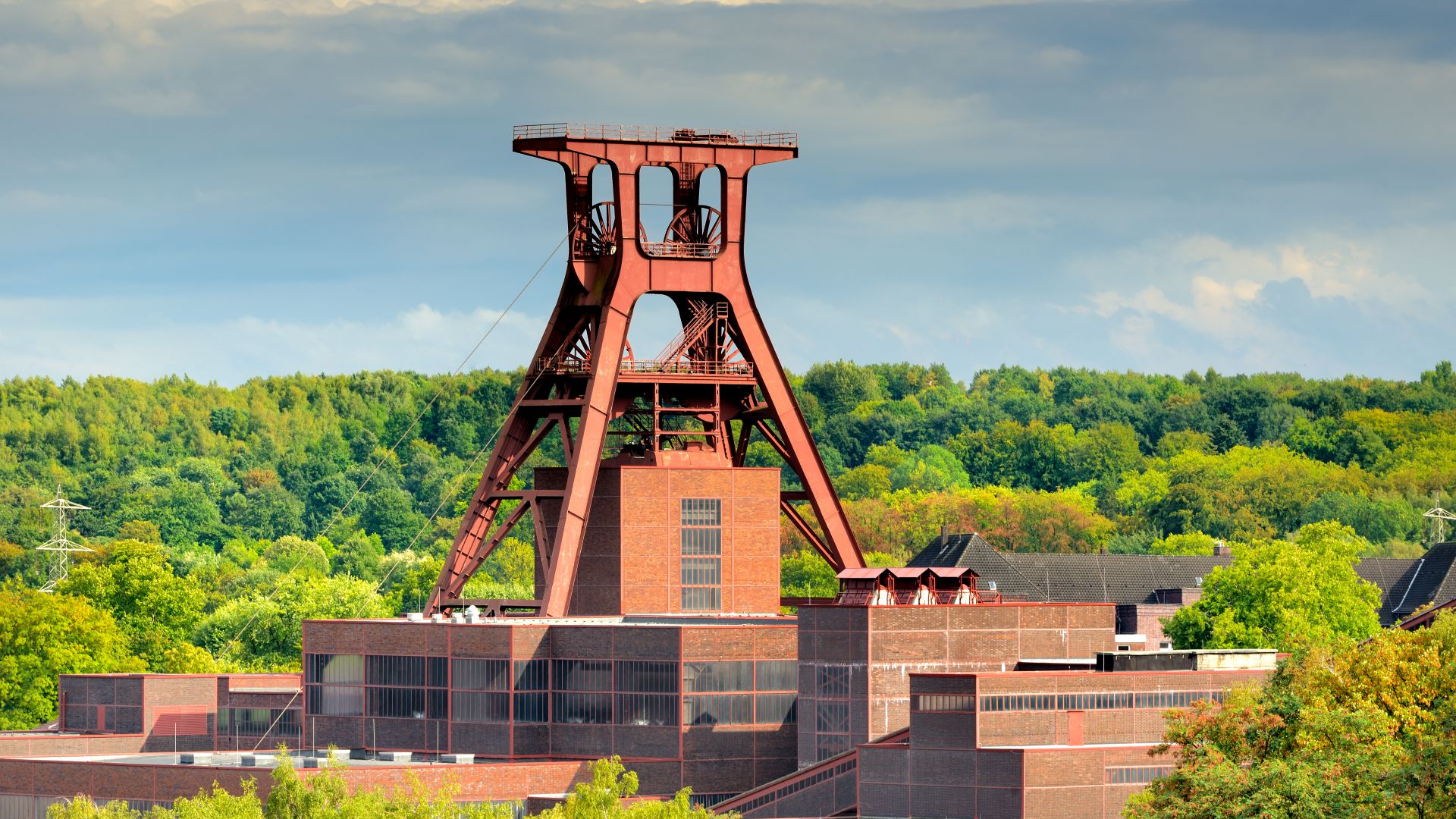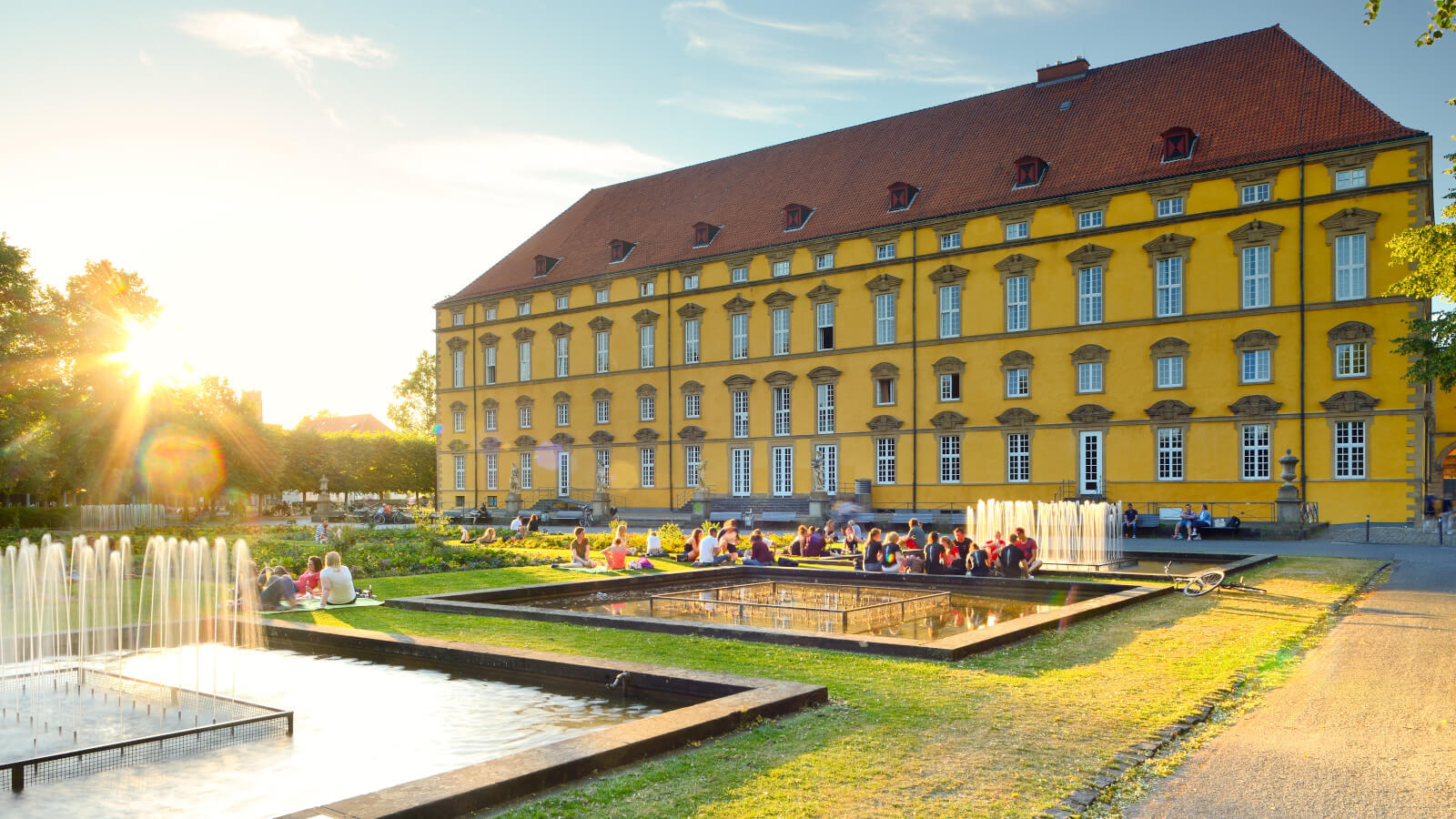Cities & Culture
Exceptionally green cities: so many parks, such beautiful gardens
"Out in the countryside" doesn't have to mean "out of the city". After all, parks, botanical gardens, meadows and the like provide plenty of recreation even within the "urban jungle". Kassel, Essen, Halle and Osnabrück stand out in that regard ...
Halle: Federal Capital of Local Recreation
 Halle: Giebichenstein Castle above the Saale River
©Adobe Stock (Mihi)
Halle: Giebichenstein Castle above the Saale River
©Adobe Stock (Mihi)
15.9% This is the high proportion of green spaces, parks and sports areas to be found in Saxony-Anhalt's largest city, Halle (Saale) – and it is higher than in any other German city. This may come as a surprise even to some of its residents! But it all adds up. In addition to the Dölauer Heide, the floodplains of the Saale river contribute a considerable amount of greenery, especially where it flows around the six extensive river islands. Some of them are nature reserves almost completely untouched by humans. A visit to Halle's mountain zoo highlights this outdoor recreational setting, as it is located on the elevated Reilsberg north of the Old Town (also worth seeing and hearing there: the birthplace of Friedrich Händel, as well as the world's largest Beatles museum). Even closer is the State Museum of Prehistory, a first-rate European destination even for those who are new to the world of archaeology. Everyone is amazed by the world-famous Nebra Sky Disk, mankind's most ancient representation of the heavens, that is more than 3,600 years old.
Kassel: river meadows, islands of flowers, Europe's largest mountain park
 Kassel: View from the cascades in Bergpark Wilhelmshöhe
©AdobeStock (fotobeam.de)
Kassel: View from the cascades in Bergpark Wilhelmshöhe
©AdobeStock (fotobeam.de)
So much for the "temporary museum of 100 days": Documenta, the world's most important series of exhibitions for contemporary art, which takes place every five years, actually leaves many long-term artworks in situ. And plants too! The "7000 Oaks", planted by Joseph Beuys in 1982, are still being enjoyed by the residents and visitors of the hill town in northern Hesse today, and so contribute to its reputation as being the second greenest town in the country. These statistics may be debatable. But the panoramic view from the Hercules alone, as well as the enormous water features (the "star" of the Wilhelmshöhe palace complex), Europe's largest mountain park and a UNESCO World Heritage Site, all make Kassel a green delight for the eyes. The Fuldaaue, Karlsaue and the Dönche, Germany's largest inner-city nature reserve, play a major role in this enjoyment. Fancy a change of scenery? The trendy Schillerviertel district is wonderfully colourful, thanks to an abundance of graffiti and street art.
Essen: once grey, now the greenest town of them all
 Essen: heritage-protected colliery Zollverein
©DZT (Francesco Carovillano)
Essen: heritage-protected colliery Zollverein
©DZT (Francesco Carovillano)
Essen, of all places! The Ruhr metropolis, located in the middle of the "Pott" region and shaped by the coal and steel industries for over two centuries, was chosen by the EU as the "Green Capital of Europe". This is the first time that a city with such an intensive industrial history has received the award. The jury was impressed by the transformation of decommissioned industrial sites, having been turned into cultural attractions (Essen was the leading city of the "Ruhr 2010" Capital of Culture year), and even more by its green spaces. A prime example is the Zollverein Coal Mine Industrial Complex, which has been awarded the title of UNESCO World Heritage Site. There are also the city's Evergreens: the large Grugapark, Germany's first garden city, the Margarethenhöhe, and Lake Baldeney. If you don't want to go (sun)bathing, enjoy the beach clubs or take a boat trip, you can cycle around the Ruhr, which has a dam there. The Villa Hügel towers above all this among the greenery, a symbol of bygone steel days that has been turned into a castle.
Osnabrück: Grand history and low-key Greenery
 Osnabrück : castle with university
©DZT (Francesco Carovillano)
Osnabrück : castle with university
©DZT (Francesco Carovillano)
As in many places in the Osnabrück region, grass - and other plant life - has long since grown over the site of the Varus Battle. Those who want to learn more about the legendary victory of the Germanic "barbarians" over the Romans can gain interesting perspectives in the modern "Kalkriese Museum and Park". This town in Lower Saxony has handled war, and even more so, peace, with ease. At least that's what the Remarque Peace Centre and, even more so, the City Hall suggests. There, in 1648, with the signing of the Peace Treaty of Westphalia at the first pan-European peace congress, the Thirty Years' War came to an end. That's all very well, but where are the beautiful green spaces that ensure the city's top place in the Green City Ranking? In addition to the many small squares, gardens and roof terraces, the Bürgerpark is particularly striking. Not to mention the University's botanical garden, idyllically situated on a lake and famous for its tropical plants.